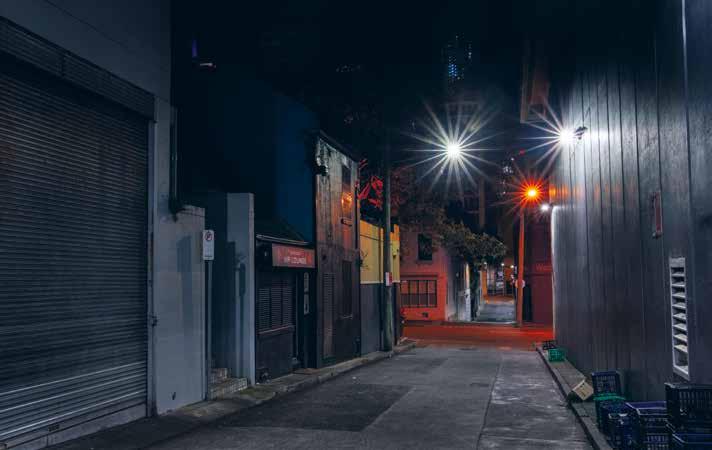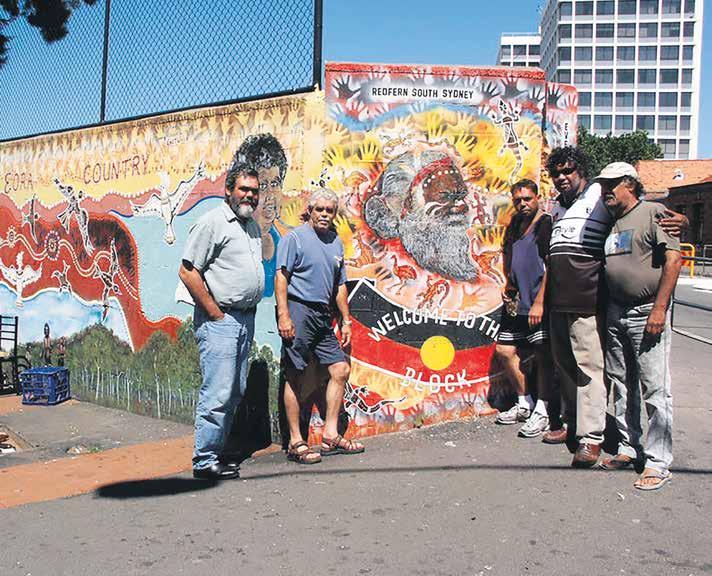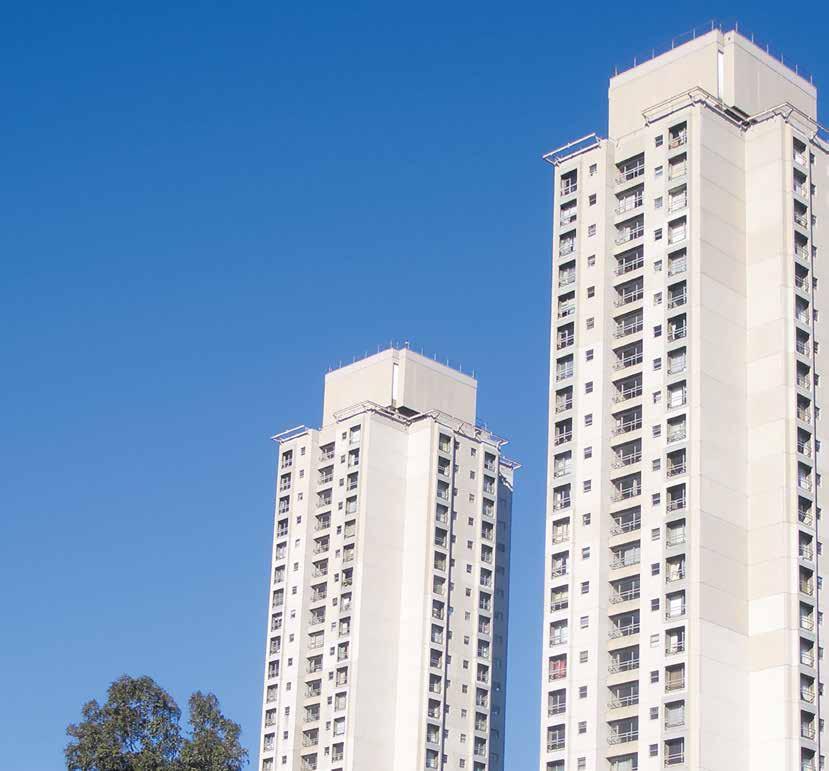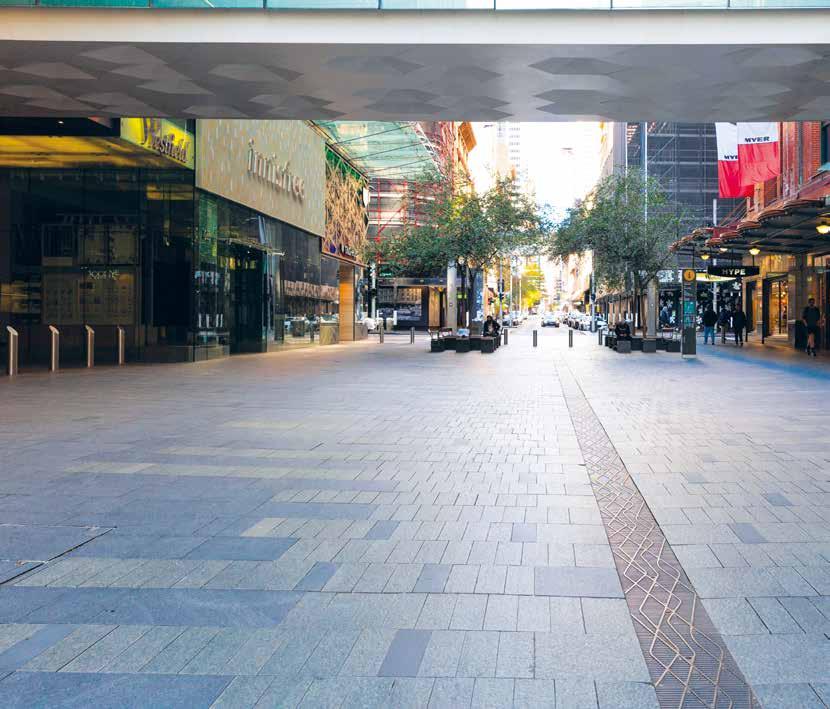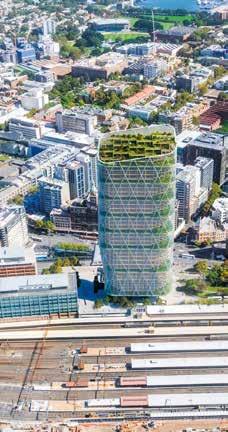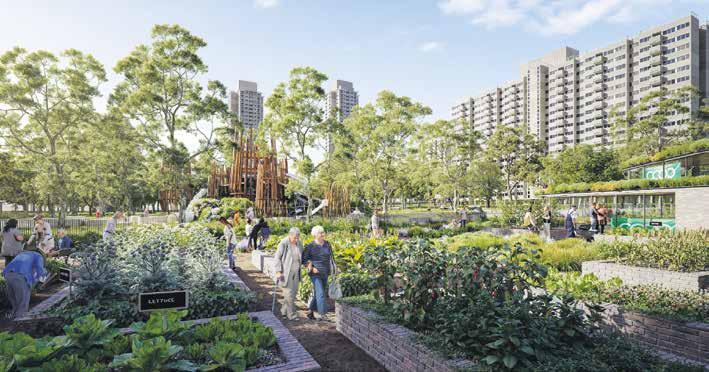COMMUNITY
A GROWING MOVEMENT
COMMUNITY GARDENS ARE FLOURISHING IN AUSTRALIA. AS CHRISTOPHER KELLY REPORTS, NOT ONLY DO THEY GREEN URBAN SPACES, THEY ALSO CULTIVATE CONNECTED COMMUNITIES.
V
ertical living has long been on the rise in inner Sydney. You only have to look around at the skyscape to see that the only way is up. And while there are real benefits to high-density housing: greater access to recreational and community facilities; shorter, more environmentally friendly commutes; being closer to friends and family — there are also downsides, such as a sparsity of green space. Is it any wonder, then, that interest in community gardens is blooming? Since adopting its community gardening policy ten years ago, the City of Sydney has established eight new gardens across the local government area, taking the total to 23 — an outcome that clearly delights Sydney lord mayor, Clover Moore. “It is fantastic that local residents are embracing sustainable living in the heart of the city and sharing the experience with others. Our city’s community gardens are a great way for people to work together to green our city and grow their own produce.” One such garden — St Helen’s Community Garden — has been established in Glebe, where 620 square metres of dead land has been converted into 25 individual plots where locals can harvest organic fruit and veg. To minimise the environmental impact of the garden’s upkeep, rainwater tanks, a worm farm, and several compost bins have been installed. Local resident Jan Macindoe said the garden gives people the chance to “experience the taste of newly picked vegetables, get their hands dirty, and learn a new skill”. And it’s not just the City of Sydney that’s promoting the concept of community gardening. “A lot of councils, especially in the Inner West, have a community garden policy now,” said Professor Linda Corkery from the Built Environment faculty at UNSW Sydney. The rising popularity of community
28
Inner Sydney Voice • Spring 2020 • www.innersydneyvoice.org.au
gardening stems from “a real interest in sustainability and healthy living, eating clean, and knowing where your food is coming from”. Whilst community gardens have existed before — in times of war and depression — the first Australian community garden of recent times was established in the Melbourne suburb of Nunawading in 1977. The first in Sydney appeared in Rozelle in 1986. Today, there are more than 600 community gardens across Australia. For people living in high-rises, ready access to green space is especially important on several levels. First, there’s the physical aspect. Gardening is good for your health: you’re using your muscles, stretching your limbs, burning calories, promoting bone density, enhancing flexibility and balance, and lowering blood pressure. In short: it’s a workout. Toiling the land can also elevate a person’s mindset. Nurturing a garden gives people a sense of satisfaction, which is associated with greater selfesteem and decreased levels of anger. Then there’s that sense of accomplishment that comes from eating and sharing food you’ve produced from scratch yourself. “I think there’s a connection between the earth and growing and wellbeing — all of those things,” said Professor Corkery. Numerous studies back this up: gardening has been found to reduce stress and improve mood; it contributes to better sleep and heightens imagination and creativity. Mental health experts say gardening can be as effective as antidepressants in treating mild-to-moderate depression and anxiety. Indeed, an increasing number of GPs view gardening as horticultural therapy and prescribe the activity as an alternative treatment for mental health. Having conducted a series of landmark studies on how green space can impact health outcomes, Associate


